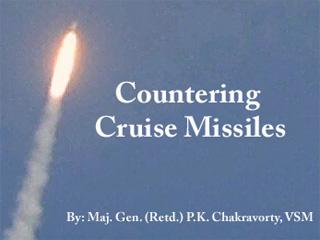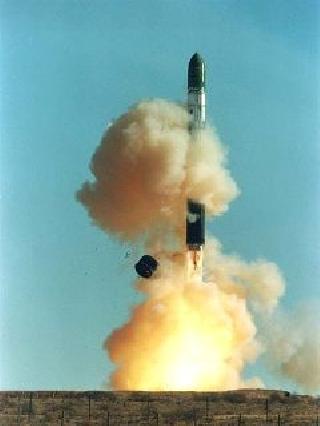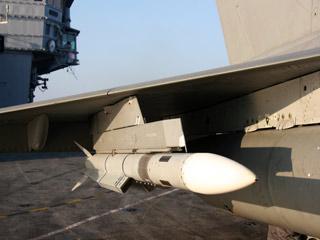
By Maj. Gen. (Retired) P K Chakravorty, VSM
Introduction
Cruise missiles came into prominence after their extensive use by the United States in the first Gulf War. They are precise weapons, designed for use against land and sea targets and are launched from land, air, sea and underwater by submarines. Most of these cruise missiles are guided by Inertial Navigation systems (INS) in combination with GPS/ GLONASS. There are other guidance systems which comprise of Terrain Contour Matching System, Digital Scene Matching Area Correlation (DSMAC) and have seekers with an active radar, anti radiation (passive radar), Infra Red (IR), Imaging Infra Red (IIR) and Autonomous Target Acquisition (ATA). Cruise missiles fly at varying altitudes starting from about 300 feet but there are missiles which fly at heights of 15 km above the ground or sea, thereby making their detection and interception very complex. Further cruise missiles are much smaller and simpler in design than manned aircrafts, possess smaller Radar Cross Sections (RCS) and emit comparatively less heat from their small jet engines making their engagement by heat seeking sensors extremely difficult. The complex task of detecting and
Intercepting cruise missiles have led countries like the United States to possibly conceptualise four strategies. First of all is the denial of access to technologies through a non proliferation regime, the second is by pre-emptive attacks against deployed systems, third is passive defence against the impacts of a cruise missile attack and the fourth is construction of a robust active defence.
Analysing these strategies leads us to conclusive evidence that the first three would not work out and only the fourth, pertaining to active missile defence would be workable.
Active Cruise Missile Defence
Engagement of a Cruise missile is similar to any aerial object and would entail the process of detection, tracking, interceptors to destroy the attacking missile, seamless communications and the ability to asses and manage the consequences of a cruise missile attack.
The most difficult part is that of detection and tracking the cruise missile. The missile flies at extremely low altitudes which make detection by satellites even in Low Earth Orbit (LEO) extremely difficult. Satellites are now graduating to usage of Synthetic Aperture Radar but even these would not be in a position to detect and track these weapon systems. Obviously the systems would have to be low elevated systems which avoid ground clutter. The figure given below indicates problems of detection by satellites. 
The next aspect pertains to Radar Cross Section (RCS). The state of art cruise missiles are currently made of composites and their shapes are tailored to reduce Radar Cross Section (RCS). With low RCS it is very difficult for radars to indicate the presence of these missiles. The figures given below elucidate this aspect. The cruise missiles are constructed to produce low RCS, thereby making it difficult to be detected by radars.
 Previous Article
Previous Article Next Article
Next Article













The Indian Air Force, in its flight trials evaluation report submitted before the Defence Ministry l..
view articleAn insight into the Medium Multi-Role Combat Aircraft competition...
view articleSky enthusiasts can now spot the International Space Station (ISS) commanded by Indian-American astr..
view article